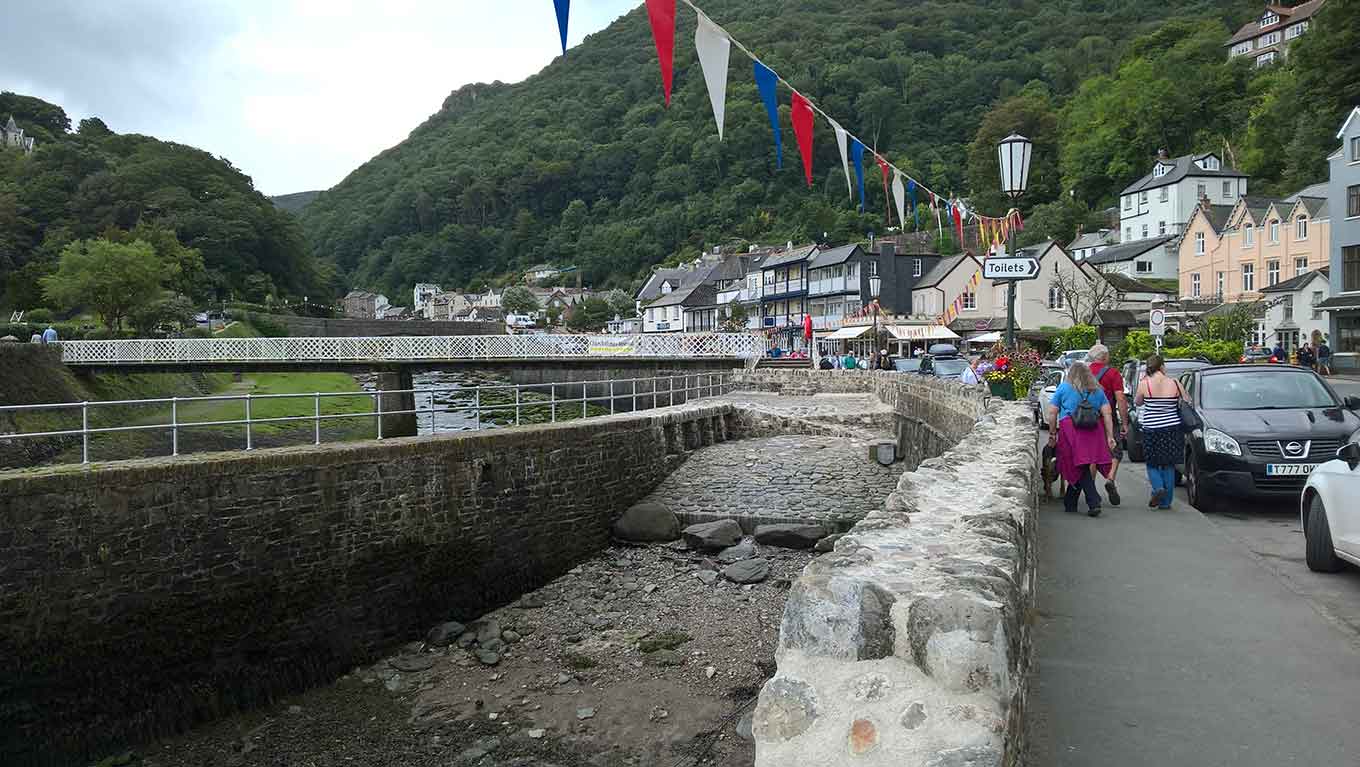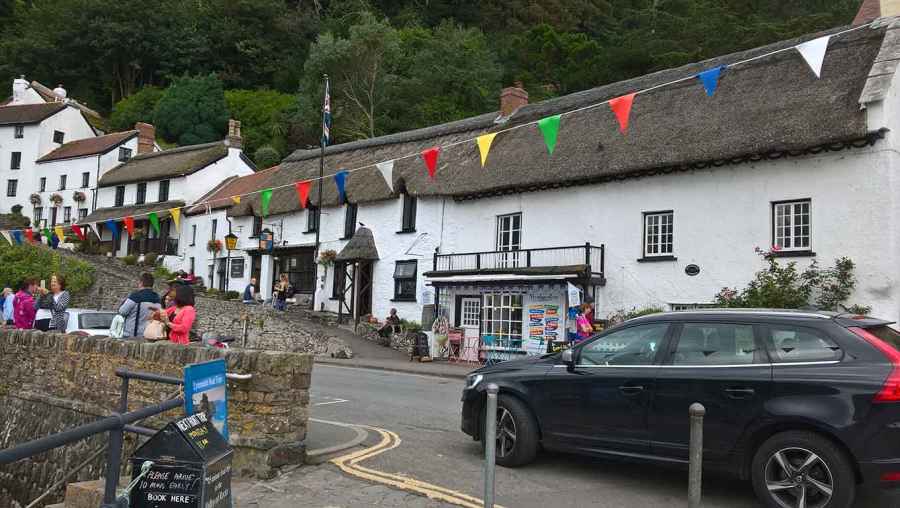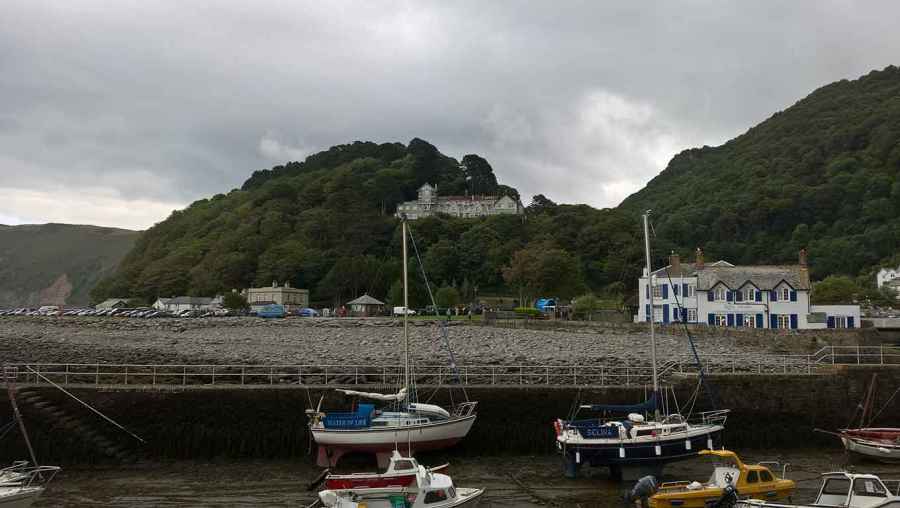
Lynmouth by Eleanor Blundell
Lynton and Lynmouth
Lynton and Lynmouth is in Exmoor National Park in England.
Lynton and Lynmouth are two picturesque villages located on the North Devon coast in England. Situated within Exmoor National Park, these neighboring towns offer a unique blend of natural beauty, charming architecture, and a rich history that continues to captivate visitors.
Lynton is perched on top of the cliffs, while Lynmouth lies at the base of the cliffs, where the East Lyn River meets the sea. The towns are connected by the famous Lynton and Lynmouth Cliff Railway, a water-powered funicular railway that has been ferrying visitors between the two since 1890. This historic attraction provides stunning views of the surrounding countryside and is a must-ride experience for anyone visiting the area.
One of the most remarkable features of Lynton and Lynmouth is their natural surroundings. The area is known for its dramatic coastal cliffs, lush valleys, and wild moorland. Exmoor National Park offers endless opportunities for outdoor enthusiasts, from scenic hikes along the South West Coast Path to exploring the ancient woodlands and hidden waterfalls that dot the landscape. The Valley of Rocks, just outside Lynton, is a particularly striking geological formation featuring towering rock formations and panoramic views of the Bristol Channel.
The towns themselves are steeped in history and exude a sense of old-world charm. Victorian and Edwardian architecture dominates the streets of Lynton, with many well-preserved buildings housing boutique shops, cozy tearooms, and traditional pubs. The Lynmouth Flood Memorial Hall stands as a reminder of the devastating flood that occurred in 1952 when the village was severely damaged. The rebuilt village has since thrived, but the memorial serves as a poignant reminder of the past.
For literary enthusiasts, Lynton and Lynmouth hold a special place in history. The renowned romantic poet, Samuel Taylor Coleridge, found inspiration in the area and spent time in the nearby village of Porlock. His famous poem “The Rime of the Ancient Mariner” is said to have been sparked by a conversation with a sailor in a Lynmouth pub. The nearby Doone Valley, made famous by Richard Doddridge Blackmore’s novel “Lorna Doone,” is also a popular destination for visitors seeking to explore the settings of this classic tale.
Whether you’re drawn to the natural beauty, the rich history, or simply the tranquility of coastal village life, Lynton and Lynmouth offer a unique and enchanting experience. From scenic walks and breathtaking viewpoints to charming streets and a warm community spirit, these twin towns continue to capture the hearts of visitors from around the world.
Created: 29 March 2021 Edited: 29 November 2023


Lynton and Lynmouth
Local History around Lynton and Lynmouth
There are some historic monuments around including:
Chapman Barrows round barrowsFurzehill Common 3: a stone alignment and associated cairn 585m north west of HoaroakLongstone Barrow round barrowsMyrtleberry South Camp, a late prehistoric hillslope enclosure 440m south west of Waters Meet HouseTwo round barrows and cairn cemetery, Ilkerton RidgeBowl barrow called Chains BarrowEarthwork defences of Countisbury Castle promontory fortLong Chains Combe South: two standing stones 380m south west of the sheepfoldRound barrow 300yds (273m) S of Woolhanger CampFurzehill Common 1: a stone setting 820m WNW of Hoaroak FarmTwo round barrows near Warcombe WaterIron Age defended settlement called Roborough CastleCewydd's Stone, Six Acre FarmFurzehill Common 2: a stone alignment 850m north west of Hoaroak FarmHut circle on Cheriton RidgeRound barrow on Farley HillHenge monument on Parracombe CommonHoaroak stone setting 340m north west of Hoaroak FarmLyn Long StonesWood Barrow round barrowFive barrows and an enclosure on Challacombe CommonHolwell Barrow round barrowTwo round barrows on Cheriton RidgeWood Barrow round barrowChains Valley stone alignment 400m north west of Exe HeadChapman LongstoneIron Age defended settlement called Stock CastleTwo enclosures on South CommonSt Brendan's Church (site of), CheritonLong Chains Combe North: a stone setting 120m WNW of the sheepfoldBarrows SE of MartinhoeStanding stones on eastern edge of Furzehill CommonRound barrow SE of Down LinhayMyrtleberry North Camp, a late prehistoric multiple enclosure fort 200m north west of Waters Meet HouseRemains of leat serving former hydro-electric generating station, on the south bank of the East Lyn River, 210m east of Oxen TorExe Plain stone alignment 425m north east of the sheepfold.






